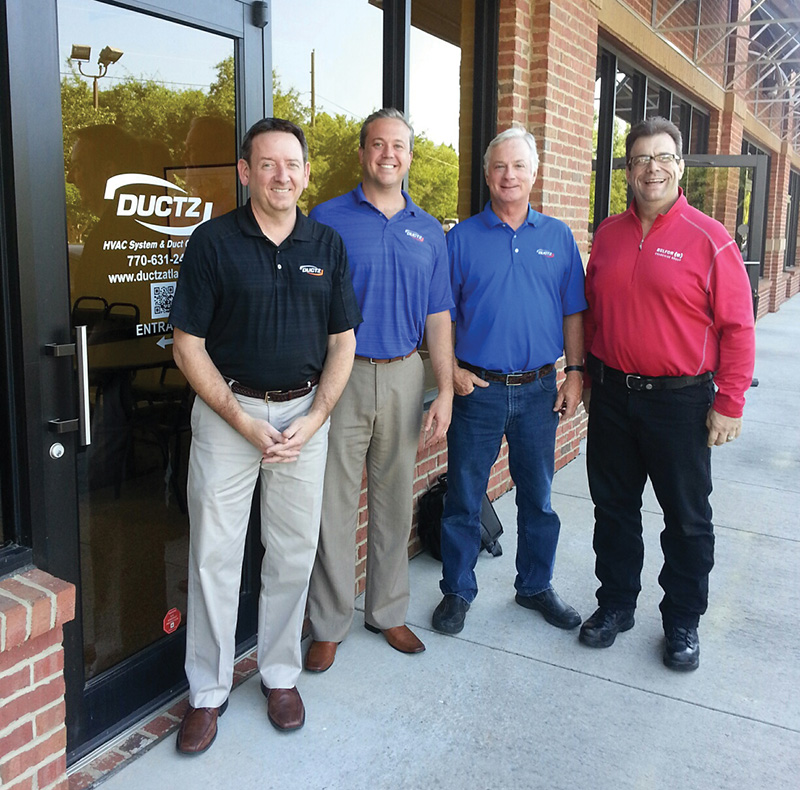Restoring your HVAC system after a flood.
By Tom Yacobellis
A hurricane, tornado or flood is devastating to businesses, schools, homes, streets and entire communities. We see this devastation first-hand across the U.S. each hurricane season, and we feverishly work to re-build these communities back to their splendor. In this surge of construction also comes a surge in home sales and home improvements. Upon any new purchase in a hurricane or flood zone, there needs to be a post-storm mindset; all homes and businesses should be thoroughly inspected with special considerations that may not have been there previously. One question includes: “Was the HVAC system cleaned and inspected after our flood?” Considering the cleanliness of the HVAC system should be a top priority because that system will be circulating the conditioned air throughout the structure. If a dirty HVAC system has been contaminated by water and humidity, microorganisms can grow and multiply as soon as 48 hours after contamination.
As in the case of any flood, we work closely with restoration companies to ensure that the HVAC system is also inspected, cleaned and restored with the rest of the property.
According to the CDC, the processes involved in inspecting and cleaning the HVAC systems after contamination need to be clearly spelled out and addressed. You will see in these excerpts from CDC fact sheets that restoring the HVAC system is a paramount concern in a post-flood situation.
 Excerpts from the Center for Disease Control: “Mold prevention strategies and possible health effects in the aftermath of hurricanes and major floods; cleaning a heating, ventilating, and air conditioning system.”
Excerpts from the Center for Disease Control: “Mold prevention strategies and possible health effects in the aftermath of hurricanes and major floods; cleaning a heating, ventilating, and air conditioning system.”
And: “All surfaces of an HVAC system and all its components that were submerged during a flood are potential reservoirs for dirt, debris and microorganisms, including bacteria and mold. In addition, moisture can collect in areas of HVAC system components that were not submerged (e.g., air supply ducts above the water line), and this also can lead to the growth of microorganisms. Therefore, all flood water-contaminated and moisture-laden components of the HVAC system should be thoroughly inspected, cleaned of dirt and debris, and disinfected by a qualified professional. CDC has prepared recommendations for professionals to help ensure that floodwater-contaminated HVAC system components are properly cleaned and remediated. If HVAC systems are not properly cleaned and disinfected to prevent the dissemination of mold and other debris throughout a building, bioaerosols of mold and other microorganisms might exist and can cause a variety of adverse health effects to the building’s occupants. Ensure that the HVAC system is shut down before any remedial activities.”
According to the CDC fact sheet, Remediation and Infection Control Considerations for Reopening Healthcare Facilities Closed due to Extensive Water and Wind Damage:
“The heating, ventilation and air conditioning (HVAC) system should be evaluated to determine the extent of damage and contamination. Professional consultation is helpful in deciding if the system needs to be replaced or if repairs and cleaning are sufficient. If repairs are done on an existing system, the motorized components (e.g., fans, blowers) should be inspected for water damage, dirt and debris should be removed from the ductwork and other components, surfaces should be disinfected using EPA-registered disinfectants designated for ductwork treatment, and filters and insulation replaced.
“HVAC system components, including ductwork that may not have been submerged, need to be cleaned thoroughly and disinfected to remove bacteria and mold that could be dispersed when the system is utilized.”
Therefore, all components of the HVAC system that were contaminated with flood water or moisture should be thoroughly inspected, cleaned of dirt and debris, and disinfected by a qualified professional with a specific detailed plan for the exact location. A certified professional should assess the property, perform an inspection of the HVAC, identify possible microbial growth and produce a report containing photos of the equipment involved in the assessment.
— Tom Yacobellis is director of the DUCTZ National Service Team (NST). Contact the author through the company website at www.ductz.com.
